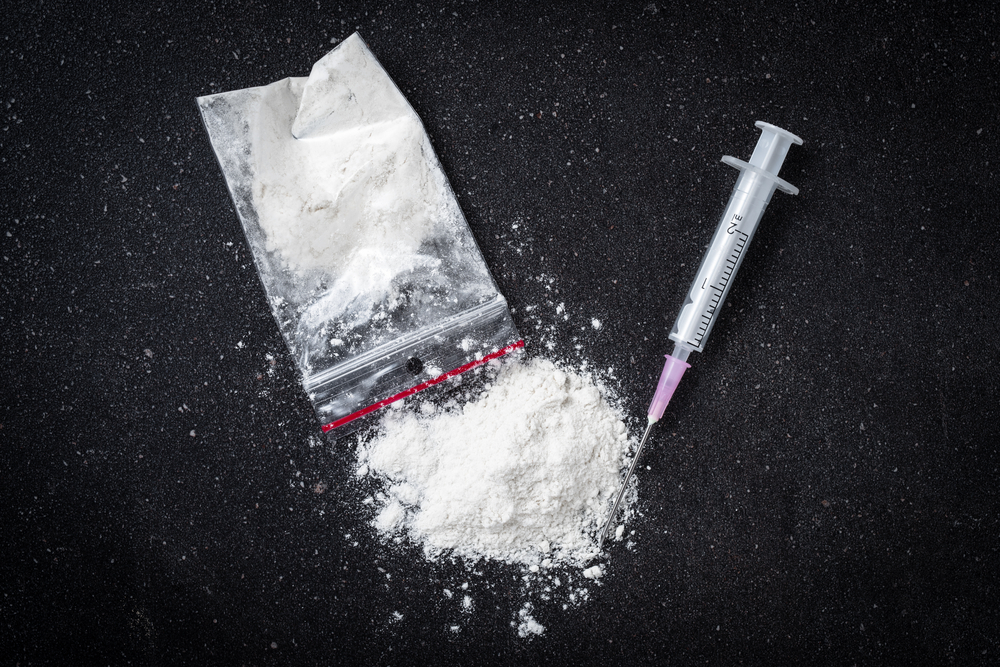The Hard Truth Behind Methamphetamine Addiction
What are Amphetamines and Methamphetamine?
Amphetamine
Amphetamine is a stimulant drug with a wide range of uses in medicine. Doctors prescribe amphetamine to treat attention deficit hyperactivity disorder (ADHD), narcolepsy, obesity, and a range of other conditions, including nasal congestion and even depression. Amphetamine, which works by stimulating the central nervous system, is available in many different formations under a variety of brand names. It is also a popular recreational drug. When individuals take amphetamine, they experience euphoria, improved cognitive and physical performance, and increased libido. Users who take amphetamine for recreational purposes generally take far larger doses than doctors prescribe. As a result, addiction is a serious risk.
Amphetamine is a member of a class of organic compounds called phenethylamine. It is composed of two enantiomers, levoamphetamine and dextroamphetamine. A wide variety of amphetamine-based pharmaceutical products are available for patients. Some of these, such as Adderall, contain combinations of both enantiomers, whereas some only contain one. While amphetamine properly refers to a free base of both enantiomers, the word is colloquially used to refer to any psychoactive substance containing one or more. Most amphetamines on the market today are not in fact composed of free base amphetamine, but rather amphetamine in salt form, which is less volatile. The most common formations of amphetamine come in tablets, capsules, and liquid. Unfortunately, despite being a perfectly legal and oft-prescribed substance, prescription stimulants are often misused and distributed on the black market. Recreational users often crush tablets, smoke or snort the powder, dissolve it in water, and even inject it.

Users who take amphetamine to get high do so because of the euphoric and focus-boosting effects. They work by increasing the brain’s production of two chemicals, dopamine and norepinephrine. Increased dopamine activity provides a feeling of intense pleasure. However, the presence of dopamine at high levels also causes users to become quickly physically dependent on the drug. Norepinephrine exerts effects on breathing, blood vessels, heart rate, and blood pressure. At low doses, the decreased blood flow and rapid heart rate that users experience is likely to be a minor. Unfortunately, at the high doses common among recreational users, adverse effects are far more likely. Side effects include irregular heart rate, heart failure, and even seizures. Over time, many recreational users experience paranoia, mood issues, and psychosis. It is also possible to overdose on an amphetamine.
Methamphetamine
Methamphetamine is a popular recreational drug with a high potential for addiction. Often referred to merely as “meth,” this stimulant drug is chemically similar to amphetamine. Meth works by stimulating the central nervous system. People who take the drug do so because of the high it provides, which is characterized by surges in energy, alertness, mood, and even libido. Because the drug causes dramatic decreases in appetite, many users also abuse methamphetamine as a weight loss tool. However, the side effects of methamphetamine can be extremely dangerous for an individual’s physical and mental health, and physical dependence can occur very quickly for meth users. Long term meth usage can lead to catastrophic consequences and can even be fatal.
Methamphetamine is a free base chemical composed of levomethamphetamine and dextromethamphetamine. It is sometimes prescribed by medical professionals to treat attention deficit hyperactivity disorder (ADHD) and obesity, but concerns over the drug’s neurotoxicity and addictiveness have made it a last resort for doctors. Methamphetamine is most frequently available as a “street drug” in the form of crystal methamphetamine, or crystal meth. Crystal meth, so named because of its rock crystal-like appearance, has the appearance of blueish-white glass shards. Recreational users take meth using a variety of routes of administration, including smoking, snorting, and injecting. Recreational users face different risks depending on their method of taking meth, but no method of ingesting meth mitigates the dangers of this harmful drug.
When a person takes methamphetamine, the high begins extremely quickly. The first 30 minutes of the meth high is notable for a feeling that many users refer to as a “rush,” characterized by a rapid heart rate, faster metabolism, and soaring blood pressure. As the high progresses, individuals often experience feelings of euphoria, improved mood and well-being, increased concentration and focus, surges of energy, and increased confidence. Methamphetamine can also increase libido.

During a methamphetamine high, users often become energetically focused on one narrow activity, ranging from sex to cleaning. Many users relish the focus, energy, and sense of intense productivity that comes from abusing meth. However, the high does not last long and is followed immediately by a “crash,” during which users experience the inverse of the effects they enjoyed during the high. In order to delay withdrawal and prevent the associated crash, many people abuse methamphetamine in a pattern known as binging. Binging on methamphetamine not only exacerbates the adverse health consequences, it also sets users up for physical dependency and addiction.
Amphetamine and Methamphetamine History
Amphetamine was first developed in Germany in 1887 by a Romanian chemist named Lazăr Edeleanu. However, the stimulating effects of the drug went unnoticed until 1927 when an American chemist named Gordon Alles resynthesized the drug. In 1933, the pharmaceutical company Smith, Kline, and French began marketing amphetamine under the brand name Benzedrine. Benzedrine, which began as a decongestant in inhaler form, shortly became a popular drug prescribed for a variety of conditions, from narcolepsy to chronic pain.
Meanwhile, in 1893 a Japanese chemist named Nagai Nagayoshi synthesized methamphetamine from ephedrine. In 1919, methamphetamine was synthesized in its popular crystal form, otherwise known as methamphetamine hydrochloride.
During World War II, both amphetamine and methamphetamine were widely used by the militaries of both the Allied and Axis sides. They provided military personnel with amphetamine and methamphetamine because of the drugs’ performance-enhancing effects. A Berlin-based pharmaceutical company produced methamphetamine in tablet form and sold it as Pervitin to all branches of the Third Reich, where it was used as a stimulant to promote wakefulness. Unfortunately, the military soon discovered that both amphetamine and methamphetamine brought with them a number of negative side effects. Soldiers often became paranoid and violent under the drugs’ influence, and many took days to recover after going into combat while medicated. After the addictive nature of these substances was recognized, most militaries and governments attempted to further regulate the drugs and control distribution more tightly.
Nonetheless, both amphetamine and methamphetamine remained popular both as recreational drugs and as medications. In the 1950s, Obetrol, a pharmaceutical methamphetamine product made to treat obesity, became enormously popular in part because of its psychological side effects. Many people unintentionally became addicted to methamphetamine as a result. Amphetamine in the form of Benzedrine (often referred to as Bennies) also had a profound influence on the Beat Generation and its literary movement in the 1950s. The drug is referenced throughout Jack Kerouak’s novel On the Road as well as in the works of Sylvia Plath, Allen Ginsberg, and William S. Burroughs.
In the early 1970s, the United States classified both amphetamine and methamphetamine as Schedule II substances. While methamphetamine is still sold as a medication under the brand name Desoxyn, its use is generally discouraged due to its neurotoxicity, addictiveness, and the wide availability of safer alternatives. Nonetheless, methamphetamine remains a popular street drug for recreational users. Amphetamine continues to enjoy enormous popularity as a medication. Like amphetamine, however, it is widely abused and sometimes illicitly synthesized in clandestine labs.
How are Amphetamine and Methamphetamine Made?
Amphetamine was first produced in 1887, whe mo n a Romanian chemist derived the chemical from ephedrine. Today scientists have many methods of synthesizing amphetamine, ranging from a heat-based reduction method known as the Leuckart reaction to the Ritter reaction, which involves allylbenzene reacting to acetonitrile in sulfuric acid and then being treated with sodium hydroxide.

Many of the methods of synthesis involve creating reductions of nitro, imine, oxime, or other nitrogen-containing molecules. While these methods offer great precision and cost-effectiveness for scientists producing drugs for pharmaceutical companies, the skill and safety of methods used by illicit producers can not be guaranteed.
Methamphetamine, on the other hand, is rarely produced by qualified scientists. In fact, this dangerous recreational drug can be and often is produced in casual home labs — and even kitchens. In fact, it is often possible to purchase all of the necessary ingredients to make crystal meth simply by going to a local pharmacy. These ingredients include:
- Ephedrine or pseudoephedrine, which can be found in the cold medication aisle
- Acetone, a highly flammable substance which can be found in nail polish remover and paint thinners
- Hydrochloric acid (HCL), which is generally extracted from drain cleaners
- Anhydrous ammonia, a chemical found in fertilizer and some cleaners
- Lithium, a chemical common in batteries
- Iodine, an over-the-counter medication used for topic wound treatment
- Toluene, a chemical found in brake fluid
- Lye, which can be made from baking soda or salt
- Phosphorus, an active chemical in matches
Other common sources for methamphetamine ingredients include batteries, gasoline, chloroform, and the Freon that refrigerators use.
Manufacturing crystal meth is a dangerous process that produces a great deal of chemical waste. It is also dangerous, since the combustible chemicals involved can lead to explosions when treated with heat. Creating methamphetamine requires an individual to extract the ephedrine or pseudoephedrine from a cold medication. They must then add lithium, ammonia, and water. Afterwards, a solvent is used to extract the methamphetamine, after which it is heated to form rock-like crystals. However, crystal meth is often mixed with other substances before reaching potential drug users, meaning both the origin and the purity of the drug is never quite guaranteed.
Amphetamine and Methamphetamine Street Names
While amphetamine and to some extent methamphetamine are often known by their prescription medication brand names, when they are illicitly produced or distributed for recreational purposes they are often known by a variety of alternative names. Black market vendors use code names to avoid being detected by law enforcement agencies. Colloquial street names for drugs are always changing with the trends of drug culture. While more terms of amphetamine and methamphetamine are always emerging, the following in a non-exhaustive list of common street names for the drugs:
Amphetamine
Methamphetamine
Different Forms of Amphetamine and Methamphetamine
Amphetamine and Methamphetamine Statistics
As a first-line treatment for attention deficit hyperactivity disorder (ADHD) as well as a variety of other common conditions, amphetamine has consistently been one of the most commercially successful categories of pharmaceutical medication on the market. In recent years, amphetamine prescriptions have skyrocketed. The frequency with which prescription stimulants are prescribed has been driven in large part by an increase in ADHD diagnoses, especially among low income children. In 2008, 3.5% of United States children were prescribed prescription stimulants for ADHD. In 2016, the number of children reported to suffer from ADHD had risen to 6.1 million (or 9.4% of all children in the United States), of which approximately 62% received treatment via prescription stimulants. While it can be assumed that the majority of children prescribed amphetamine are not misusing it, its surge in prevalence leaves much to be questioned.
Adult use of amphetamine is also on the rise. In the United States, approximately 6.6% (or 16 million) adults used amphetamine in the last year, only 4.5% of adults used the medication as prescribed. An analysis by the US Department of Health and Human Services found that 5 million adults regularly misused their prescription stimulants, and a further 0.4 million suffered from prescription stimulant use disorders. While the relationship between childhood prescriptions and adult drug abuse is not fully understood, most of the adults abusing amphetamine were found to have a number of traits in common, including major depressive disorder, suicidal ideation, and a desire for cognitive enhancement. Unfortunately, the regular abuse of this medication is likely to lead to further cognitive impairments and mental health problems for this population.
Methamphetamine, in contrast to amphetamine, is often stigmatized as a dangerous street drug. However, a 2017 study by the National Survey on Drug Use and Health determined that 0.6% of the United States population (or 1.6 million people) used meth in the last year. Approximately half of these users also used meth in the last month. The current average age of a methamphetamine user is 23 years old. While adolescent use has seen a steady drop in recent years, many people are first exposed to crystal meth before reaching the age of 18. A 2018 study by Monitoring the Future found that 0.5% of highschoolers had tried or used meth in the past year. While not all young people who try methamphetamine go on to become addicted, their chances of suffering from a substance use disorder increase.
Approximately 964,000 people in the United States (or 0.4% of the population) suffers from a methamphetamine addiction problem. Their chances of experiencing health problems, difficulties at work or school, and premature death are high. Unfortunately, the vast majority of people addicted to methamphetamine never seek treatment — or lack access to it. In fact, the number of people enrolling in treatment programs for methamphetamine addiction has seen a steady drop in recent years. Meanwhile, between 2007 and 20017, overdose deaths from methamphetamine and related drugs have increased by 7.5 times. According to the Centers for Disease Control and Prevention, approximately 13,000 people died of meth-related overdoses in 20018, which is more than twice the amount that died in 2015. While the opioid epidemic has distracted the media from the dangers of methamphetamine, it remains a fact that this killer drug will continue to take lives until further action is taken.
Why are Amphetamine and Methamphetamine so Addictive?
While methamphetamine is generally seen as a dangerous street drug, both methamphetamine and amphetamine are physically addictive drugs. While the legal status and prevalence of prescription stimulant prescriptions can give amphetamine the appearance of safety, it is in some ways just as addictive as crystal meth. When a person takes either drug, the amount of dopamine naturally available in their brains increases dramatically. This surge in dopamine is in large part responsible for the euphoric feelings that drug users seek from these drugs, dopamine is also notable for playing a large role in the brain’s reward centers that control motivation and decision-making. When an activity causes dopamine to be released, people are more likely to repeat that activity. Because amphetamine and methamphetamine release such enormous quantities of dopamine, the brain is likely to strongly reinforce drug-taking behavior.
Methamphetamine and certain short-acting amphetamine medications offer a high for only a short period of time, making it more likely for recreational users to go on binges. When a person repeatedly uses a drug over and over for a short period of time, they are likely to develop a physical dependence. When physical dependence develops, increased drug tolerance can cause people to take higher quantities of methamphetamine or amphetamine to achieve desired effects. Another consequence of physical dependence is withdrawal, an array of painful symptoms that become apparent when stimulants wear off. Fear of amphetamine and methamphetamine withdrawal can cause people to begin taking the drugs even when they do not want to do so.

When addiction occurs, a person may find it difficult if not impossible to control their own substance use. They may suffer from a variety of consequences from continued substance abuse, including problems with relationships, mental or physical health, difficulties at work or at school, and even overdose. While it may be tempting to try to cut down or quit “cold turkey” on ones own, it is absolutely essential that anyone suffering from a substance use disorder seek outside help as soon as possible. Addiction is a real mental health disorder that cannot be conquered through sheer willpower. Seeking the aid of a medical detox center, inpatient treatment program, outpatient addiction program, or sober living home can help people suffering from addiction get access to the support and resources they need. Methamphetamine and amphetamine addictions are dangerous and demoralizing, but they can be treated.





